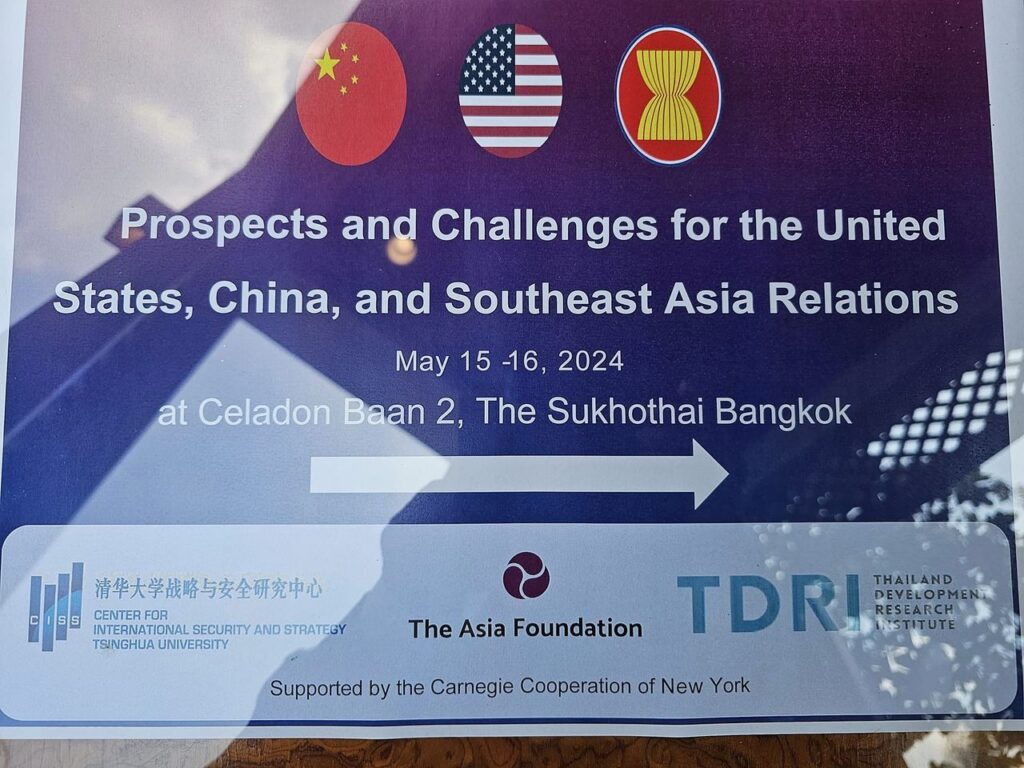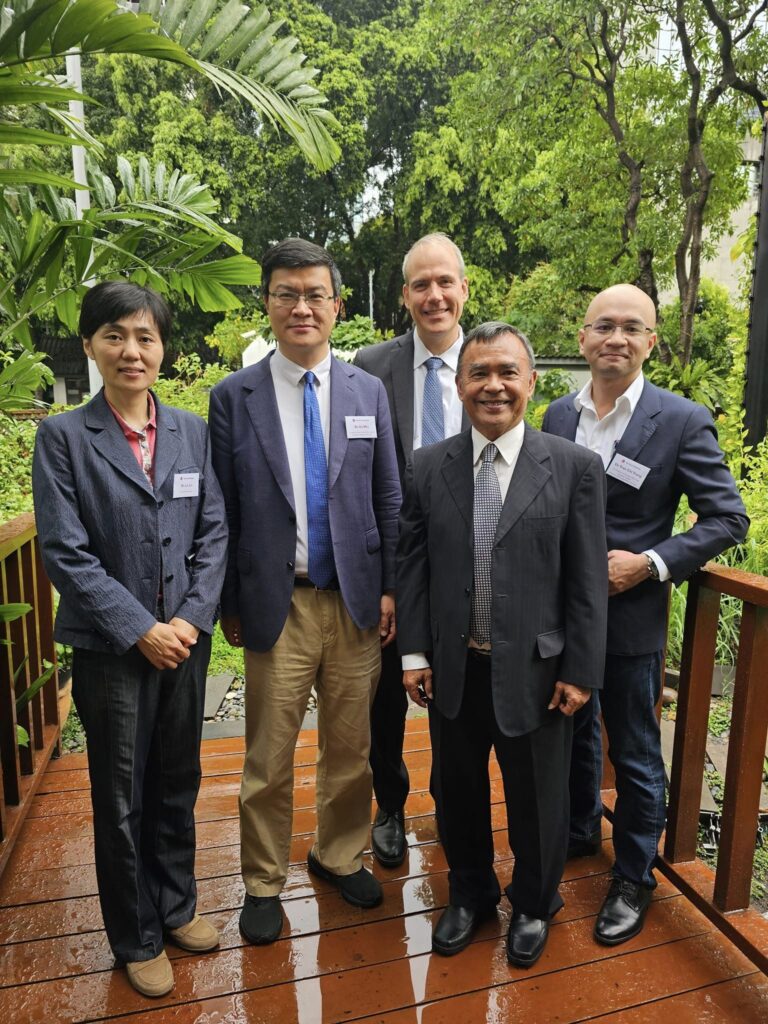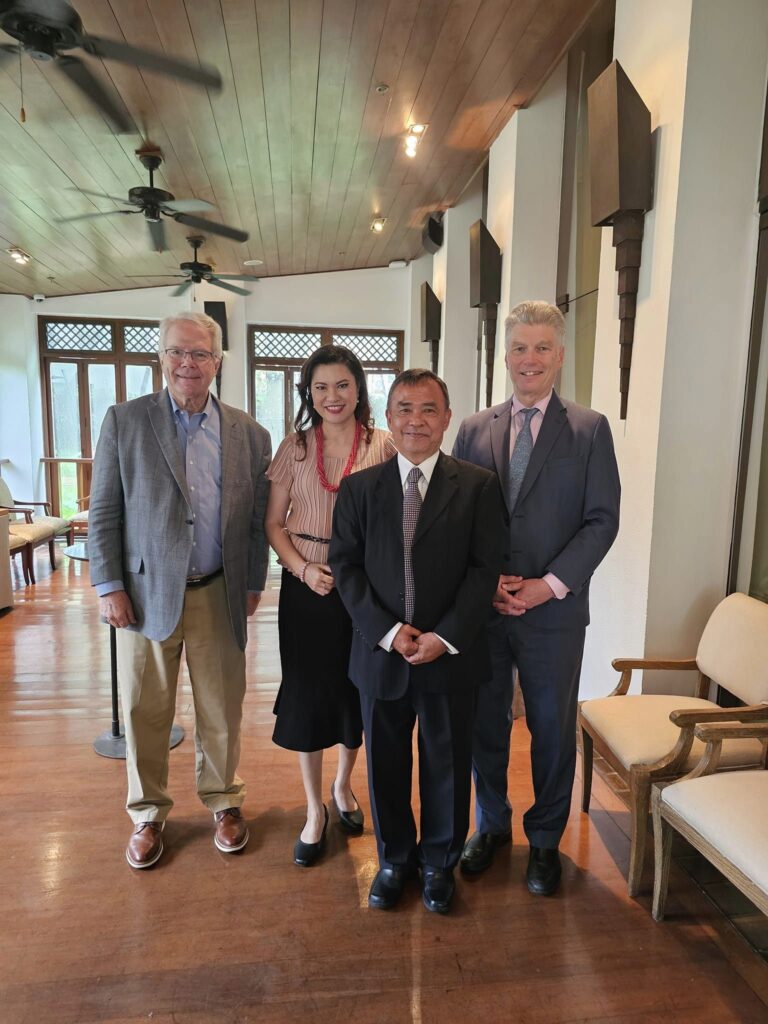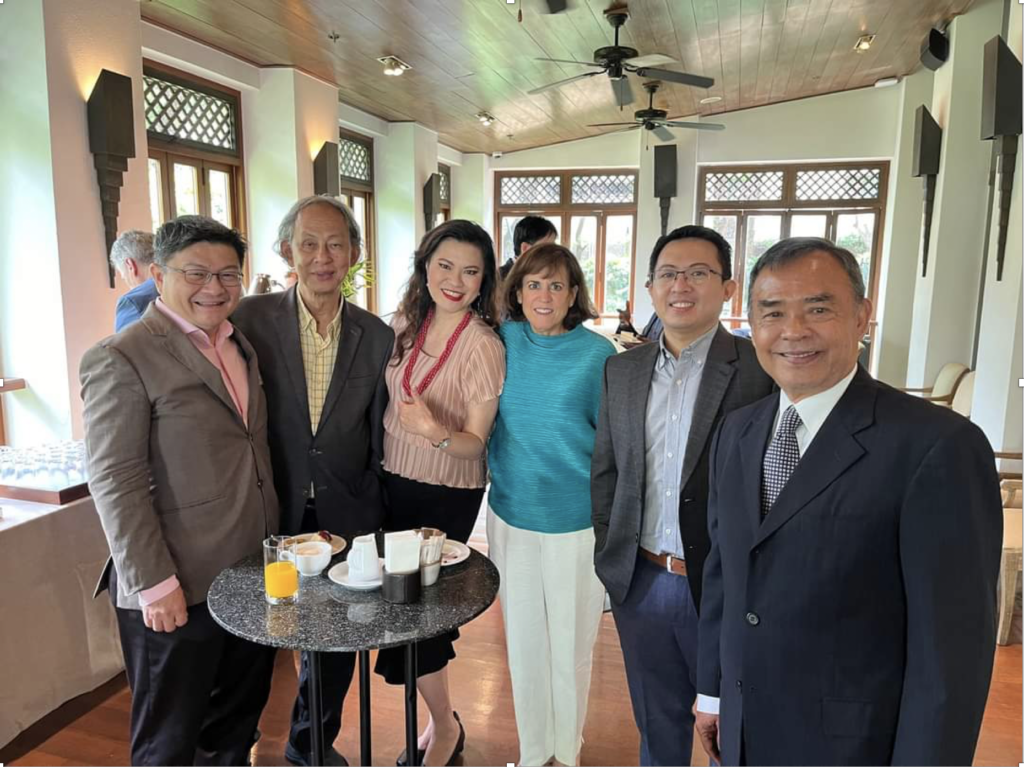Organized by the Asia Foundation, Tsinghua University’s China Institute for Security Studies, and the Thailand Development Research Institute (TDRI), Bangkok, Thailand, 15– 16May, 2024.
The workshop brought together approximately 20 participants from China, Southeast Asia, and the United States to explore the central question – “What are the top priorities and concerns of the United States, China, and Southeast Asia in the coming decades?”
Amb. Pou Sothirak, Distinguished Senior Advisor of the Cambodian Center for Regional Studies (CCRS) was invited to speak on three questions: (1) Will China look to create alliances? (2) How will the US alliances evolve in the region? (3) Can ASEAN maintain its centrality? Here is the brief summary of his answers.
1- Will China look to create alliances?
China considers the Indo-Pacific as its neighborhood and Beijing also wants to makes the rules imposing its influence with its own version of alliance. China style of alliance is different than the US and Beijing is also actively builds up its allies to counter the US resistance to China’s wanting to have greater role in the geostrategic environment within the region.
China is already creating an alliant frameworks such as the Belt and Road Initiative (BRI) in autumn 2013, the Global Security Initiative (GSI) in April 2022, the Global Development Initiative at the United Nations General Assembly in September 2021. These initiatives are designed to counter the US strategy to contain China. At the Baoa Forum for Asia annual conference at the end of March this year, Beijing proclaim itself as leader for a new era of sustainable development, and China is the pillar of sustainable development of the world economy in the post-COVID-19 era.
2- How will the US alliances evolve in the region?
The US-led security alliances are considered exclusive organizations, acts as a mean to provide more targeted security protection for their members and aims at deterring or countering security threats they face from their adversaries. The US realignment security system evolve from bilateral alliances of a “hub-and-spokes” model to a minilateralist security cooperation system which Washington thinks it is more attractive alternative framework for security cooperation in maintaining the US supremacy in the Indo-Pacific amidst the growing competition from China. Once created, they will influence and define strategic interactions among the powers in the Indo-Pacific region as they tackle different types of challenges imposed by their rivals.
The US Security alliances are here to stay and they will become more intensify with increase potency in term of striking capabilities and exhibit stronger security bond among their members, as American continue to views China as adversary. The only concern is that as the US-led alliance is gaining momentum, multilateralism is in decline, marginalized small states and weaken the role of ASEAN.
3- Can Asean maintain its centrality?
The regional bloc needs to maintain its strategic autonomy by prevent outside influences from dividing it or undermining regional peace, stability and prosperity. ASEAN needs to act as a reliable facilitator of cooperation and become more self-sufficient so as to avoid relying too much on any one power to safeguard the region’s security and interest.
Maintaining Asean centrality demand skillful navigation of US-China tensions based on the principle of neutrality by strategically leveraging its existing frameworks to encourage constructive cooperation between the two big powers and avert direct confrontation, which would surely have disastrous effects on the region.
The bloc must recalibrate its modus operandi of consensus, non-interference and consensual decision-making to command greater collective statements and actions on key regional and global issues. A comprehensive review of the implementation of its charter to strengthen common positions and improve dispute-resolution mechanisms is needed to strengthen Asean centrality to engage with external partners effectively. Asean must not choose side between the two biggest powers to remain relevance.





